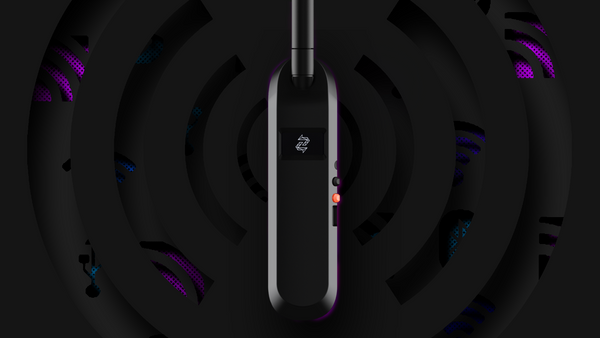Radio is the technology of signaling and communicating using radio waves. In nowadays world radio waves are used in different spheres, starting from Cell phones and Television broadcasting, and finishing with Space Communication and Remote controlling.
Overview
The history of radio is a fascinating journey of technological development and cultural impact. It began with the theoretical concepts of electromagnetic waves and culminated in the widespread use of radio broadcasting as a mass communication medium.
The groundwork for radio technology was laid in the 19th century when scientists like James Clerk Maxwell and Heinrich Hertz conducted experiments on electromagnetic waves. The use of "radio" as a standalone word dates back to at least December 30, 1904, when instructions issued by the British Post Office for transmitting telegrams specified that "The word 'Radio' is sent in the Service Instructions".
Radio encompasses the devices, systems, and processes involved in generating, transmitting, and receiving electromagnetic signals within the radio frequency spectrum. Radio technology has played a pivotal role in transforming the way people communicate, access information, and navigate the world, making it one of the most significant technological achievements in human history; as an example, Radio navigation systems utilize radio signals to determine the position, speed, and direction of vehicles or vessels. Examples include the Global Positioning System (GPS), VHF Omnidirectional Range (VOR) used in aviation, and GMDSS (Global Maritime Distress and Safety System) used at Sea.
Technology
You are absolutely correct! Radio waves are a form of electromagnetic radiation, and they are radiated by accelerating electric charges. They are commonly generated artificially by time-varying electric currents in antennas. As these waves travel away from the transmitting antenna, they spread out, leading to a decrease in signal strength with increasing distance. This phenomenon limits the range over which radio transmissions can be effectively received, as various factors like transmitter power, antenna radiation pattern, receiver sensitivity, noise level, and obstacles (Buildings, Air Humidity, Clouds, Mountains, etc.) between the transmitter and receiver influence the effective communication range.
While radio waves are widely used for telecommunication due to their favorable propagation characteristics, other forms of electromagnetic waves, such as infrared, visible light, ultraviolet, X-rays, and gamma rays, can also carry information and be used for communication in specific applications.
Each type of electromagnetic wave has its unique properties and applications. Radio waves, with their relatively large wavelengths (Low frequency), are well-suited for long-distance communication and can penetrate obstacles like buildings, making them ideal for wireless communication. Meanwhile, shorter wavelengths (High frequency), like those of visible light, infrared, and ultraviolet, are used for fiber optics, remote sensing, and various data transmission applications.
Radio as a part of Telecommunication
Radio plays a crucial role in telecommunications, particularly in wireless communication. Telecommunications is the exchange of information over a distance, and radio technology is a key enabler for transmitting voice, data, and multimedia content wirelessly.
Radio is the foundation of mobile communication networks. Mobile phones and other wireless devices use radio waves to communicate with cell towers or base stations. These towers act as relay points to connect mobile devices to the broader telecommunications network.
Wi-Fi technology, commonly used in homes, offices, and public spaces, relies on radio waves for wireless local area network (WLAN) communication. Wi-Fi enables devices like smartphones, laptops, and tablets to connect to the internet and other devices within a limited range without the need for physical cables.
Bluetooth technology utilizes radio waves for short-range wireless communication between devices. It is commonly used for connecting peripherals such as wireless headphones, keyboards, and speakers to computers and smartphones.
Telecommunications via satellites rely heavily on radio waves. Communication satellites in orbit around the Earth receive signals from ground-based transmitters and retransmit them to other locations, providing global coverage for voice, data, and broadcasting services.
With ongoing advancements in radio and telecommunications, new technologies like 5G and beyond are pushing the boundaries of wireless communication with higher data rates, lower latency, and increased connectivity.
Radio & Zentanode
Radio plays a significant role in the Internet of Things (IoT), enabling seamless communication between various devices and sensors in the IoT ecosystem. The IoT is a network of interconnected devices, objects, and systems that exchange data and perform tasks without direct human intervention. Radio technology is crucial in providing wireless connectivity and ensuring efficient data exchange in IoT applications.
Radio technologies like Wi-Fi, Bluetooth, Zigbee, Z-Wave, and LoRaWAN are commonly used to establish wireless connections between IoT devices. These radio protocols allow IoT devices to communicate with each other and with central hubs or gateways.
For IoT applications that require long-range connectivity, technologies like LoRaWAN (Long Range Wide Area Network) and NB-IoT (Narrowband IoT) are utilized to connect devices over larger distances with lower power consumption. Radio technology enables the ubiquitous connectivity of IoT devices. Devices can communicate with each other and with cloud-based applications or centralized control systems regardless of their physical location, allowing for seamless integration and data sharing in real time.
In summary, radio technology forms the backbone of the IoT and Zentanode, which makes it possible and safe for users to maintain wireless communication, energy-efficient operations, and seamless connectivity between users and IoT devices within the Zentamesh network.

Thank you and Best regards - Zentachain Team!
















